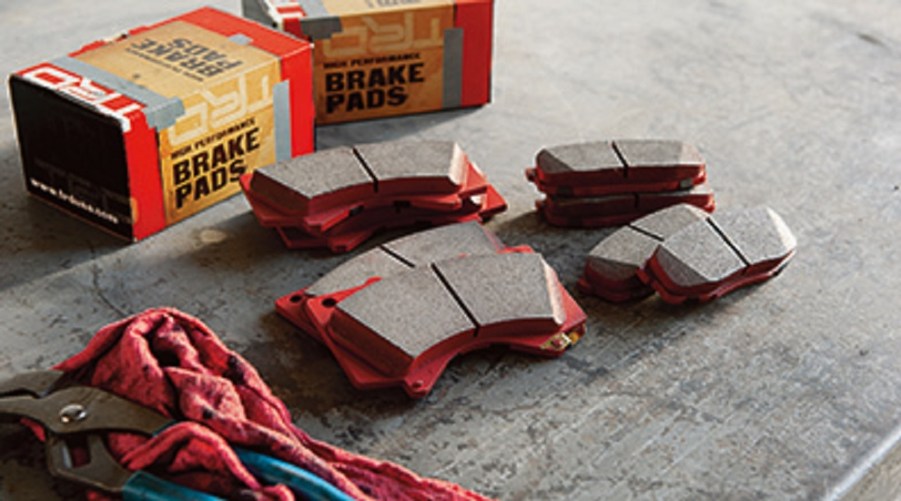
Why Pickup Trucks Need Good Brakes
When it comes to pickup truck safety features, most consumers tend to focus on airbags, seat belts, and crumple zones. But truck safety involves more than just those. There are the risks associated with going over payload capacity, for one. However, there’s one more thing that isn’t always considered: a pickup truck’s brakes. But as GM’s latest recall showed, truck owners, need to make sure their brakes are up to snuff.
Why you should care about your pickup truck brakes
Trucks like Roush’s F-150 Nitemare and Ford’s own F-150 Raptor may be fast, but they can’t always stop as quickly as they go. Used car site Carwow has demonstrated multiple times how poor the previous-gen SVT Raptor’s brakes were. This goes double for older trucks, like GMC’s Syclone, which have older brake technology.

It also applies to newer trucks, too. Users on the r/Cars sub-Reddit have raised concerns over the Tesla Cybertruck’s brakes. This is an electric truck that will allegedly go 0-60 in less than 3 seconds but has a weight that puts it in the same class as medium- and heavy-duty pickups. It needs to have brakes to match.

With the IIHS reporting a need to increase the severity of its crash tests because of how large trucks have gotten, truck owners should make sure their brakes are up to snuff. Especially if they haul or tow heavy loads.

Loading up a truck puts additional strain on its brakes and suspension, especially going up and down inclines. That’s part of the reason why Ford’s biggest trucks have exhaust restrictors, to slow the trucks down without burning up the brakes. It’s not just about keeping the occupants safe, but about keeping everyone around you safe, too.
Maintaining your brakes properly
Whether your truck uses disc pads all around, or drum shoes in the rear, its brakes will require regular inspection and replacement. Depending on how you use your truck, and in what kind of conditions, your brakes may wear out sooner or later. Unlike your oil, there’s no specific mileage service interval.
CarGurus recommends changing your pads and shoes every 50,000 miles. However, brake pads come with wear indicators, which touch the rotor and squeal when enough friction material has worn away.

Some brake pads also feature a slot similar to a tire’s that truck drivers can use to visually check how much material has worn away. However, the pads and shoes are only one part of the braking system. The rotors themselves also eventually wear down and need to be replaced.
In addition, truck owners should also regularly change their brake fluid. Modern brakes work by using hydraulic pressure to squeeze the pads. Over time, Cars.com and Carfax explain, dirt and moisture eventually get into even the best braking system. Along with normal wear and tear, this lowers the fluid’s boiling point, so when it heats up during normal braking, bubbles form. This causes the brake pedal to feel squishy and makes it harder for your truck to stop. Each manufacturer has its own use-dependant recommended brake fluid service interval.
Should you buy the most expensive pads and rotors?
In general, according to Consumer Reports, trucks have longer braking distances than other vehicles. Mostly because pickup trucks are heavier than many passenger cars. That’s one reason why Edmunds.com recommends truck drivers increase their following distances. However, it is possible to improve a truck’s braking with different brake pads and rotors.
Jason Fenske of Engineering Explained demonstrated why cheapening out on brake pads can lead to disaster. In his test of various brake pads, the budget brake pads (under $20) actually experienced glue failure during testing. Braking heated-up the pads so severely, the friction material started to separate from the pad’s backing plate.
That being said, truck owners don’t necessarily have to buy the most expensive pads or rotors. Fenske found mid-level auto parts store brake pads actually out-performed more expensive pads in some tests. And as AutoGuide explains, some brake pad materials, like carbon-ceramic, don’t truly become effective unless used on a race track.
However, changing out your brake pad friction material is a simple and fairly inexpensive way to shorten braking distance, FourWheeler reports. In addition, truck owners can also fit larger rotors—increasing the surface area means better braking. Just be sure to check if the rotors fit inside your wheels. The rotors can also be slotted or cross-drilled to improve cooling and dust ventilation to shorten braking distance.
It’s also possible to fit multi-piston calipers, which increase how much pressure the braking system can apply to the rotors. However, these calipers are quite expensive and aren’t really necessary for most truck owners.

Good brakes are vital for a pickup truck, for the safety of both its driver and others around it. But with proper care and understanding, owners can be sure they have something they can depend on.


